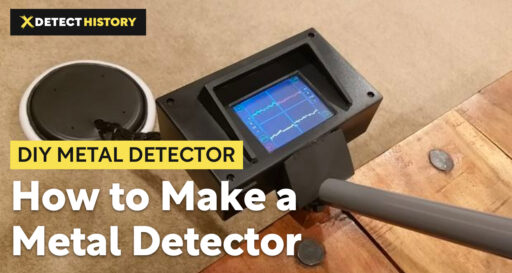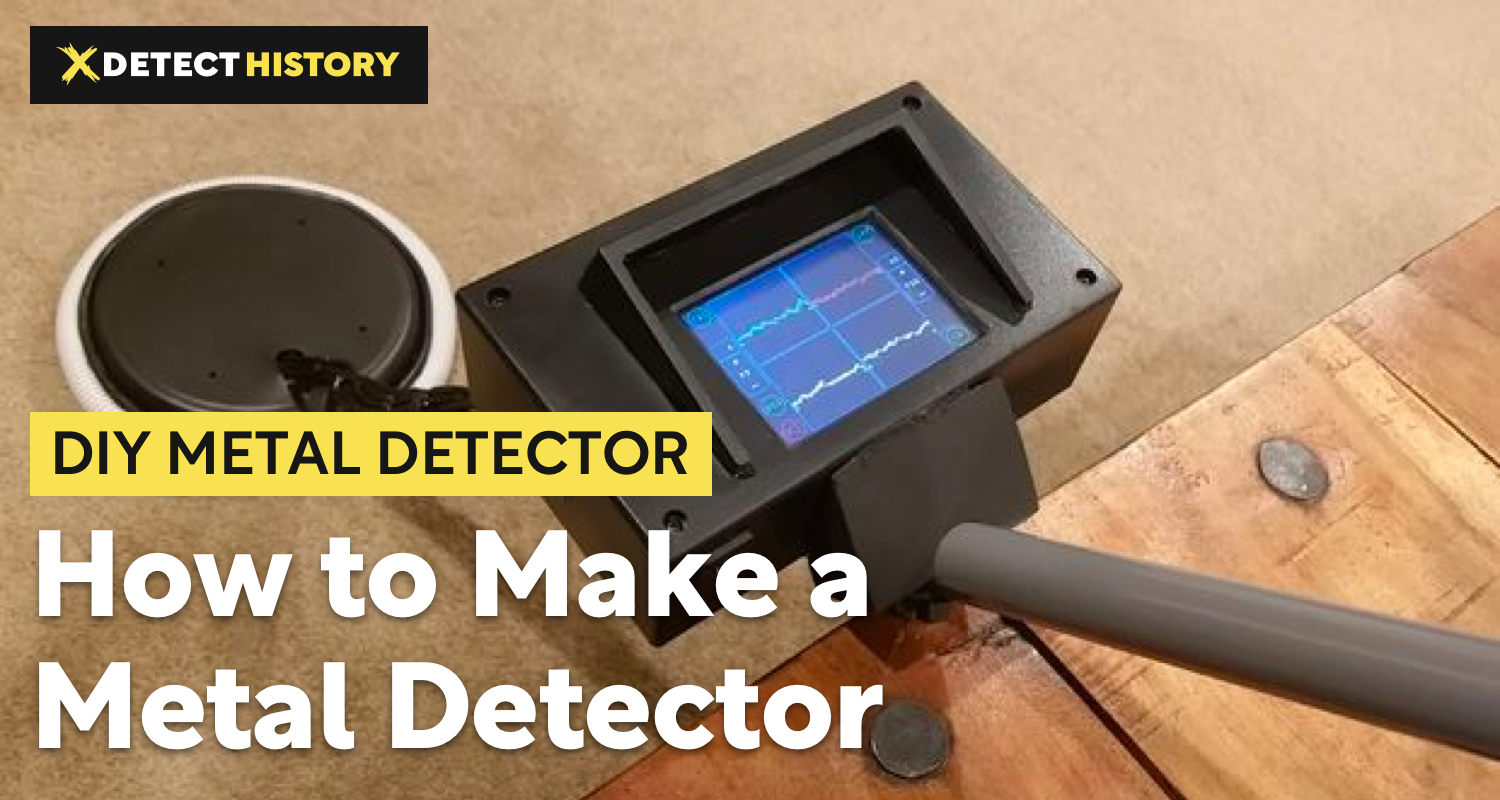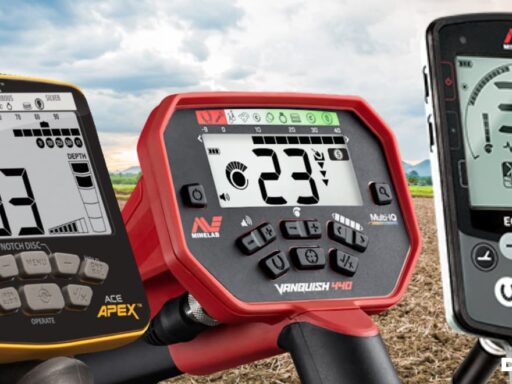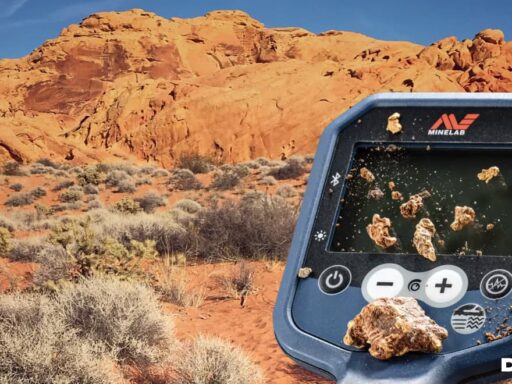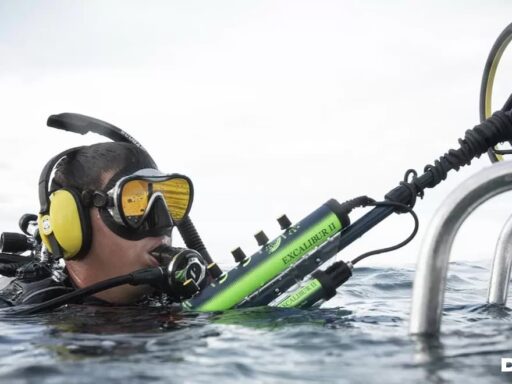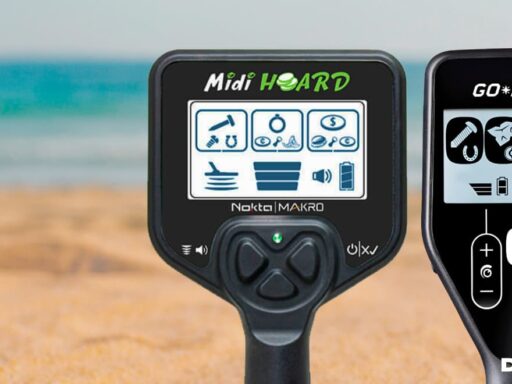DIY metal detectors interest not only beginners who would like to try their luck with making their own machine, but also experienced detectorists who have been there and have tried it all, and eventually want to make an attempt to create their own machine.
Please keep in mind this is not a 100 percent practical guide that will help you make a metal detector step by step immediately after you read the post. Instead, in this post we will look at three of the most popular ways of making metal detectors at home, and will discuss what details you may need, what approaches you may take, and what difficulties are likely to stand in your way.
How to Make a Metal Detector – 3 Popular Ways for a Homemade Metal Detector
While it is a hard task to create a really DIY powerful metal detector that would compete with those manufactured by famous brands in terms of functions and features, it is still possible to make a simpler machine from improvised materials. You may want to get a special DIY metal detector kit for a metal detector, or you may try to do everything yourself.
If you prefer to skip the shortcuts, these are tools and materials you will most probably need:
- breadboard
- wires
- pliers
- tweezers
- soldering wire
- soldering iron
- two compasses
- ruler
- pensil
- high quality sharp knife
- hot glue
- resistor
- capacitor
- PCB
- battery
- battery cable
- wires
- buzzer or speaker
- copper wire
- gaffer tape
- wood glue
These tools and materials will be useful for any of the three variations of a DIY metal detector we will discuss below. Talking about the control box, shaft, and coil, you can try wooden frames or even high quality cardboard frames. However, if you have such a possibility, you can order frames printed on a 3D printer.
Arduino Metal Detector
For an Arduino metal detector, you will need an Arduino Nano board. This is a microcontroller board that was developed by Arduino.cc. These Arduino boxes are constantly used in all kinds of electronics, from primitive to more complicated projects. Arduino boxes were basically created for people with no technical education or decent background – for example, students. Besides being a great tool for electronic projects and DIY items, Arduino has a real community around it, so help and support can be asked for there.
Now, the tech specs of ArduinoNano are as follows:
- operating voltage – 5 V
- flash memory – 32 KB
- clock speed – 16 MHz
- input voltage 7-12 V
- power consumption – 19 mA
- PCB size – 18 x 45 mm
- weight – 7 g
The board uses Mini USB instead of a standard USB connection (something to keep in mind), and is programmed with the help of Arduino IDE software installed on the computer. You do not need any specific additional software to transfer the burner program from PC to the board, just connect it to the PC with Mini USB cable.
To make a working DIY metal detector Arduino, you should start with a prototype first. That is, don’t bother with the shaft, the handle, and all those details until you make sure your electric circuit is working, and that your programmed control box also works properly. First, make the control box and the coil, two main working components without which metal detecting is impossible. Connect all the elements of the circuit, and only after that go reprogramming your Arduino Nano board. Then, double-check whether everything works together well.
If your circuit and your Arduino board work properly together, your prototype is ready and you can start working on other elements – the shaft, the handle (or armrest if you’re making a big metal detector), and maybe a coil cover instead of a bare search loop. You may want to make a sturdy shaft that is comfortable to hold, and make sure the rod from the coil to the control box does not stick out, because you’ll catch things with it and can damage it easily.
DIY Arduino metal detectors are very popular among wannabe treasure hunters who have the necessary skills of making those devices at home, mostly because of Arduino (comparatively) easy programming capacities.
Pulse Induction Metal Detector
DIY pulse Induction metal detector is another popular alternative to a manufactured metal detecting device. Pulse Induction is a good idea, because this design is usually tolerant to ground effects, works well with non-ferrous metals, and will show good performance even if you manage to make a waterproof coil to search in shallow water.
To make a DIY pi metal detector on your own, decide whether you want to make the whole circuit yourself, or whether you would like to download already completed software. There are actually loads of software pieces available freely online for DIY PI detectors.
After you decide upon circuit and software – either made on your own or downloaded and reprogrammed – you will need to make the search coil. You can take a wire and make a coil of approximately 30+ turns, and use some insulation on it to prevent the self capacitance of the coil. Please keep in mind that you can change the size and shape of the coil; you can make smaller loops and squeeze them a bit to create elliptic shape for better performance and manoeuvrability. When you make the coil, you will have to secure the windings, by embedding them in epoxy or print a plastic cover, because any shaking of the windings will make the coil lose efficiency.
If your circuit, your software for control box, and your coil work fine, connect them all and maintain the coil cover, the shaft, the rod, and the handle for your DIY metal detector. Again, you can choose to make a more solid frame out of wood, metal, or plastic, or you can use cardboard as the first try. The most important thing is to make sure the coil performance is adjusted to the control box. This way, you will get a nice Pulse Induction metal detector sensitive to non-ferrous objects, efficient underwater, and even with some ground balance capacity.
VLF Metal Detector
Very Low Frequency DIY metal detectors can also be made with the help of Arduino Nano, but they can also be made with the use of an affordable signal generator module with adjustable frequency. The expected available operating frequency for such a DIY VLF metal detector is from 2 to 5 kHz. The best thing about replacing the Arduino Nano with a signal generator module is that the settings become extremely simplified, so even a total noob can manage. Moreover, the room appears for additional experiments.
Another fun thing is that you can actually use a smartphone as a display and signal interprete for this metal detector. There are metal detecting apps that can actually turn the smartphone itself into a metal detector, but the performance of a smartphone can’t be compared with a proper search coil, even a homemade one. So, if you’ve got a spare Android smartphone, maybe you will need that one for more convenience.
Also, for VLF metal detector’s smoother performance, you can consider making not a concentric round or elliptical coil, but a Double D shape. For that, you need two identical coils made of approximately 55 windings each, of the same size. Then, bend the coils into the D shape each, and put them together so that the Ds would locate to different sides. This is your search coil, just make sure it is immobile and would not shake.
Before you try your prototype out, make sure the coils produce an equal electric field and receive the response in a similar manner; you don’t want each half of the coil performing in a different way.
If your circuit, software, and coil work well together, gather them all into a single detector using the rod, shaft, coil cover and handle. Usually even homemade VLF detectors show surprisingly good results.
How to Make a Metal Detector Coil
Before you make your own search coil for the DIY metal detector – any of the described above – you need to decide upon all aspects of your search coil. The DIY metal detector coil is necessary, and it has to be stable and not shaky.
First things first, decide upon the size of your coil. Smaller coils usually perform well with small and shallow objects, and are effective on trashy locations with lots of items on close distance to each other. Bigger coils usually allow to cover larger areas and provide better depth of reach. However, this is especially true for metal detecting devices manufactured at factories; if we are talking about a homemade machine, making a large coil makes little sense, because anyways it won’t perform that well. So, better make a small to medium coil, and try to not make it too heavy.
Secondly, decide upon shape. You can make it round or elliptical. Round ones are stable in performance and predictable. Elliptical coils are less stable, but more manoeuvrable and show nice performance on uneven surfaces. Considering these characteristics, it may be much easier to make a round coil; however, if you want a DIY detector not for fun, but to actually reach out somewhere around the house and look for metal objects, perhaps an elliptical coil is your choice.
Thirdly, decide upon configuration. You can make a concentric coil, a monoloop, or a DD configuration. Monoloop is the easiest option for a homemade metal detector easy, because the receiving and transmitting coils are around the same winding, and Monoloop provides better depth than, say, DD coils. DD coils are also easy to make at home, and they are more versatile in operation. Concentric coils require a more thorough swiping, but they are very accurate at pinpointing things.
After you decide upon size, shape, and configuration, take your wires and make windings, from 30+ to 50+ is a nice number of windings for an efficient coil. Make sure the windings don’t shake; you may want to make a stable cover, or embed the wires in epoxy. Some people use cardboard or even wood and glue the wires to such a cover.
How to Make a Metal Detector Pinpointer
Basically, you can make a DIY pinpointer metal detector in the same manner as you make a full-fledged metal detector, but using an Arduino Nano board and a powerful concentric coil for accuracy. However, to be effective, a pinpointer must have a different shape with a probe, and eventually, it is better to get a factory-made one if you want really good results. To make an efficient pinpointer at home, one needs additional knowledge and skills, so we would recommend checking out the best metal detectors review and best detectors for beginners guide for more information about the pinpointer tools.
Wrap Up
Making metal detectors at home is fun, if you know how to make a homemade metal detector, and have all the necessary materials. Some people do that as a hobby, others use homemade devices to occasionally spot metal items at home or in the backyard if they need. However, to be honest, homemade machines can never be compared even to the cheapest factory-made machines. So, if you are really interested in treasure hunting and metal detecting, or you actually want a working device at home for your daily needs, better check out the affordable machines for beginners made by reputable brands.
